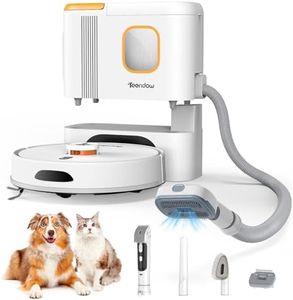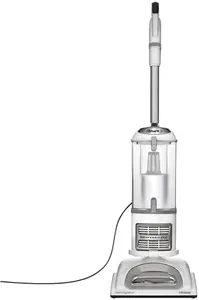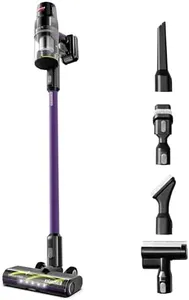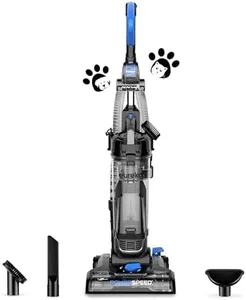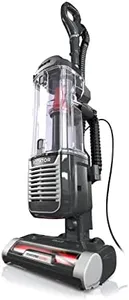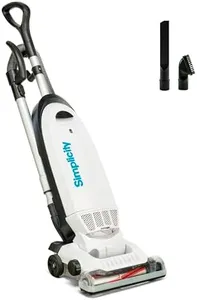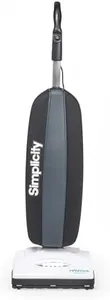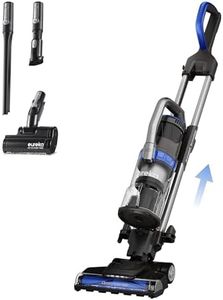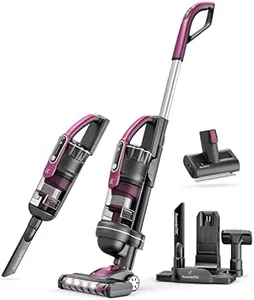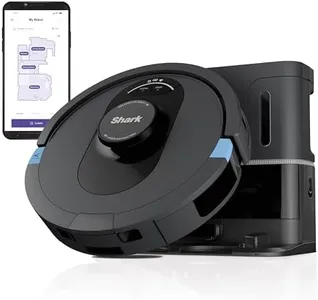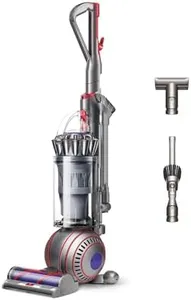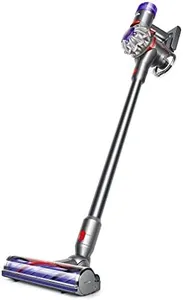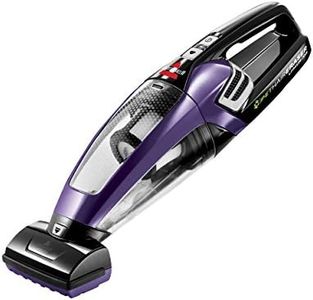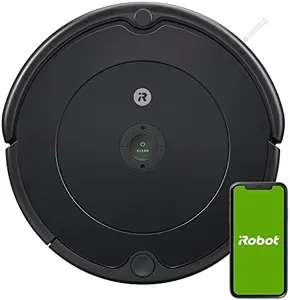10 Best Pet Hair Vacuums 2025 in the United States
Our technology thoroughly searches through the online shopping world, reviewing hundreds of sites. We then process and analyze this information, updating in real-time to bring you the latest top-rated products. This way, you always get the best and most current options available.

Our Top Picks
Winner
Shark Upright Vacuum, Navigator Lift-Away with Swivel Steering, HEPA Filter, XL Dust Cup, Pet Power, Dusting Brush, and Crevice Tool, Perfect for Pet Hair, White/Silver, NV356E
Most important from
111877 reviews
The Shark Upright Vacuum, Navigator Lift-Away NV356E, is designed with pet owners in mind, showcasing several features that make it effective for tackling pet hair and dander. Its Lift-Away functionality allows for easy cleaning of stairs and above-floor areas, which is a significant advantage for households with pets. The HEPA filtration system effectively traps 99.9% of allergens, making it great for allergy sufferers. The brush roll shutoff feature allows you to switch between cleaning carpets and bare floors without much effort, enhancing its versatility.
One of the standout features is the XL dust cup, which holds up to 0.87 liters of debris, enabling longer cleaning sessions without frequent emptying. The included attachments like the Pet Power Brush, dusting brush, and crevice tool provide comprehensive cleaning options for various surfaces and tight spaces.
There are some drawbacks to consider. Weighing in at 13.7 pounds, it may be a bit heavy for some users, making maneuverability slightly more challenging during prolonged use. While the swivel steering aids in navigating around furniture, the vacuum is still corded and could limit movement compared to cordless options. Additionally, the noise level is around 80 dB, which might be considered loud, especially for pets who are sensitive to sound. The Shark NV356E is a robust choice for pet owners, offering effective cleaning capabilities and useful features, but potential buyers should be prepared for its weight and consider the noise level as factors in their decision.
Most important from
111877 reviews
Bissell Cleanview XR Pet 300W Cordless Vacuum with Removable Battery, 3797V
Most important from
107587 reviews
The Bissell Cleanview XR Pet 300W Cordless Vacuum is a solid choice for pet owners looking to tackle pet hair with ease. One of its standout features is its powerful motor, which is 60% more powerful than some competitors, ensuring effective suction on various surfaces like carpets and upholstery. The vacuum also offers up to 40 minutes of cordless cleaning, making it convenient for moving around the house without being tethered to an outlet.
The inclusion of a deep cleaning fur brush specifically designed for pet hair pickup is a real plus, allowing users to clean furniture, stairs, and even cars effectively. Additionally, it comes with multiple attachments such as a dusting brush and a crevice tool, which enhance its versatility for different cleaning tasks.
There are a few drawbacks to consider. The vacuum's filtration system uses foam filters, which may not be as effective in trapping fine dust particles compared to HEPA filters found in some other models. While the vacuum is lightweight at 5.9 pounds, some users might find it less sturdy when navigating larger cleaning jobs. The 0.3-liter capacity could also require more frequent emptying, especially in homes with multiple pets. Noise level is not extensively detailed, but as a cordless vacuum, many users may expect it to be quieter than traditional corded models.
Most important from
107587 reviews
Eureka PowerSpeed Bagless Upright Vacuum Cleaner, Pet Turbo, Black
Most important from
59417 reviews
The Eureka PowerSpeed Bagless Upright Vacuum Cleaner is a compelling choice for pet owners. Its lightweight design at just 10 pounds makes it easy to maneuver, which is ideal for quick and effective cleaning sessions. The vacuum features a powerful suction with five height adjustments, allowing it to transition seamlessly between hard floors and carpets, ensuring thorough cleaning on various surfaces. An extra-large 2.6-liter dust cup means less frequent emptying, letting you clean more without interruptions.
The inclusion of a pet turbo tool, crevice tool, dusting brush, and upholstery tool, all stored onboard, enhances its versatility and convenience, especially for tackling pet hair and above-floor cleaning tasks. Additionally, the washable filters and bagless design help keep maintenance costs down. However, there are some drawbacks. The noise level is relatively high at 88 dB, which might be bothersome during extended use. The hose length is only 2.1 feet, which could limit reach for some users.
It's also a corded model, which may not appeal to those who prefer the freedom of cordless vacuums. While it offers great value with a two-year limited warranty and a solid 4.3-star customer rating, those sensitive to noise or looking for cordless options might need to consider these factors.
Most important from
59417 reviews
Buying Guide for the Best Pet Hair Vacuums
Choosing the right vacuum for pet hair can make a significant difference in maintaining a clean home, especially if you have furry friends. Pet hair can be stubborn and challenging to remove, so it's essential to select a vacuum that is specifically designed to handle it. When shopping for a pet-hair vacuum, consider the following key specifications to ensure you get the best fit for your needs.FAQ
Most Popular Categories Right Now
